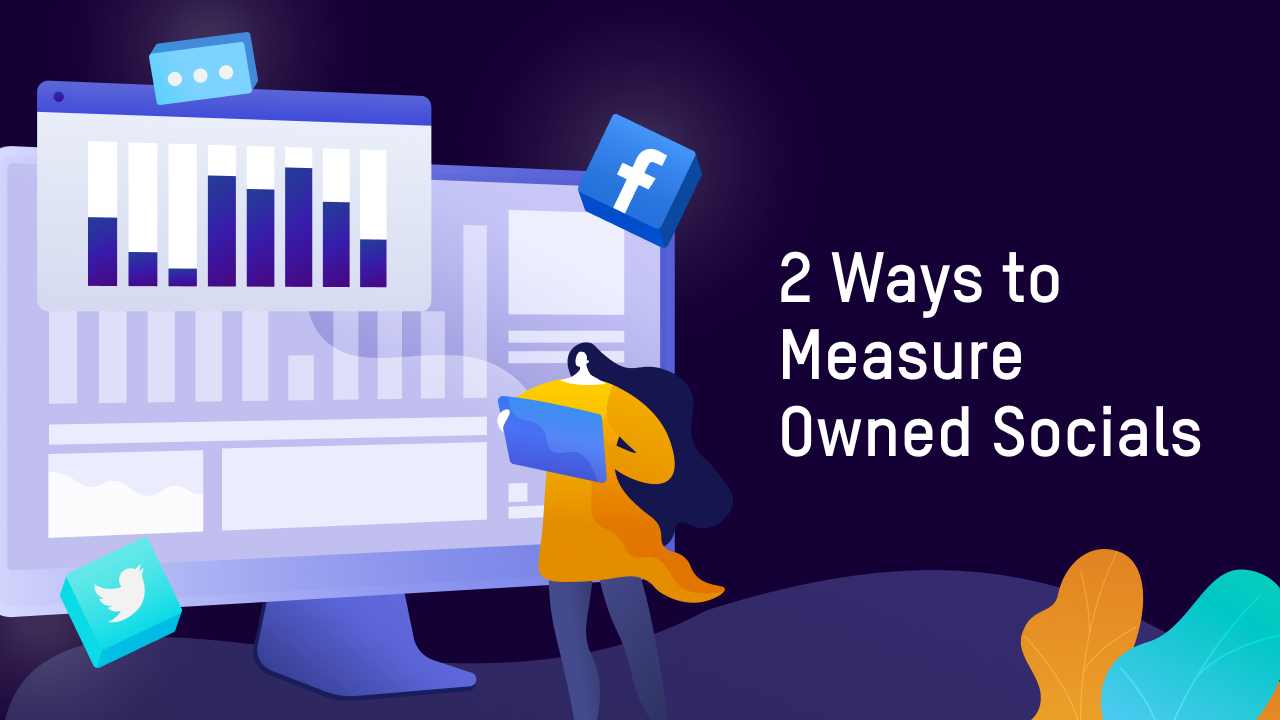Tracking Success on Social: Native Tools or Third-Party Tools

Everybody seems to be on social these days—by this, we mean half of the world’s population. Currently, there are over 4.59 billion people on social worldwide, each person spending roughly 2.5 hours shuffling through different social channels in a single day (Statista & DataReportal).
With its enormous user base, social is considered the best place to be for brands, especially those looking to build instant yet lasting connections with their consumers in this hyperconnected world. In fact, more than 92% of U.S. enterprises are using social to reinforce their marketing initiatives and harness their customer relationships (Statista).

While there are numerous social channels right now, Facebook remains undefeated. It continues to be the top social platform (55%) for B2C companies, followed by Instagram (27%). Meanwhile, LinkedIn (40%) is hailed the leading channel for B2B companies, closely trailed by Facebook (32%) (Statista).
But as more and more companies step onto the social playing field, it’s becoming more challenging for brands to cut through the noise. How do you get noticed and get your message out amid all the digital clutter? Well, it all boils down to one thing—analytics.
Your data is your gold mine, so they say. This is especially true in social marketing. Being able to dig into your data and extract useful insights is your key to gaining leverage over your competitors. The process of analyzing data on your social channels is known as owned social analytics.
Owned social analytics involves analyzing your content on your social channels. It’s different from social listening.

While these are both forms of measuring social performance, social listening is more concerned with monitoring the conversations around your brand—basically content that you don’t own. Owned social analytics is a broader concept than that, which ultimately helps you evaluate your social campaign performance and optimize your social content.
There are two ways you can analyze your owned channels—you can either cash in on native analytics tools or tap into a bigger ecosystem of third-party solutions (or maybe both!).
Let’s differentiate these two and look into the core features of each one, as well as their advantages and limitations to help you determine which is the most suitable for your business needs.
The Good… and The Ugly

#1 Native Analytics Tools
Native tools are integrated in your social channels, such as Facebook Insights, Twitter Analytics, YouTube Analytics, and so on. These tools give you direct access to data around the content that you publish on your own channels.
What’s great about native tools is that they offer advanced capabilities for data analysis, as well as a variety of data visualization options (for free!). No need to use third-party tools to get your hands on basic analytics reports about your channels.
Native tools also give you access to more comprehensive metrics about your content, which isn’t accessible on most third-party tools. These in-app solutions also let you export raw data, oftentimes in Excel format, offering you more granularity than you can imagine. This isn’t possible in most third-party solutions.
However, native tools also have their downsides. First, when using them, you’re limited to one channel at a time. You can’t perform cross-channel analysis of your performance across multiple platforms, unlike when using third-party tools. Second, there is less flexibility with native tools. You can’t create custom dashboards of metrics that you want to focus on.
#2 Third-Party Analytics Tools
Third-party tools, on the other hand, help you aggregate data from multiple social channels via API (Application Programming Interface). This technology enables social channels to share information with other applications seamlessly. Hootsuite, Keyhole, SproutSocial, Sprinklr, and Agora Pulse are just some of the leading third-party solutions for collecting social data.
The advantage of third-party tools is that they offer a centralized reporting of data, which is critical if you’re managing multiple accounts across different social networks. You can easily conduct cross-channel analysis of your social handles without the need to switch channels each time.
Unlike native tools, there is also more customizability with these types of analytics solutions. You can create custom metrics so you can inspect areas of your social campaigns that you want to drill down into.
Aside from that, third-party tools can go as far as standardize metrics, which help you analyze data pulled from disparate sources more easily. We all know that the metrics are different across social channels. For example, the engagement metrics on Twitter (tweet, retweet, heart) are different from Facebook (react, comment, share), so their ability to standardize this critical information allows for consistent and reliable reporting of data on your part.
Aside from making data tracking and analysis more convenient, third-party tools are also equipped with publishing and content management capabilities. Most third-party analytics tools allow you to efficiently create content calendars and schedule posts.
This is essential, especially if you’re doing cross-channel marketing. You don’t need to switch channels when publishing content as you can simply use these tools to publish content across all your social channels.
The disadvantage of using third-party tools, however, is the limited access to data. While you get access to cross-channel data at the drop of a hat, the information you get isn’t that exhaustive per channel, compared to native tools. The data you can export is also not as in-depth since data isn’t pulled directly from the source.
Furthermore, some third-party tools measure social performance using their own metrics. They have their own scoring methods, which are unique to the platforms. However, such unique rating systems are unreliable and often confusing to marketers.